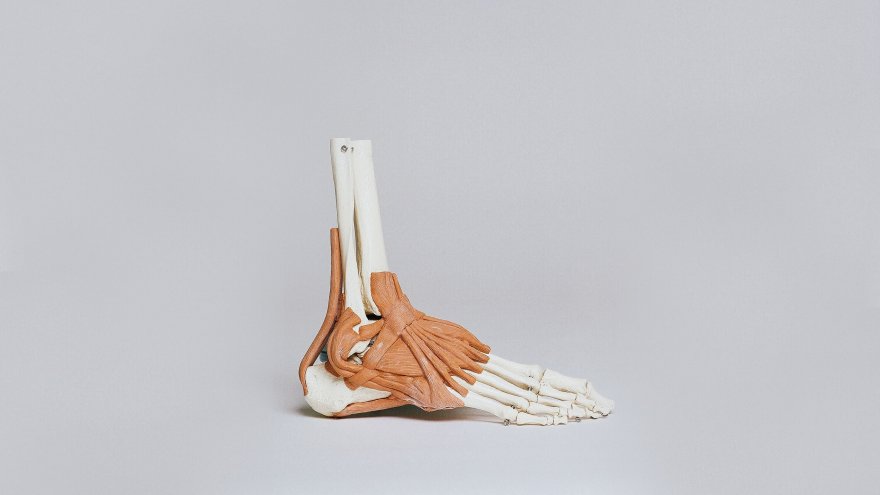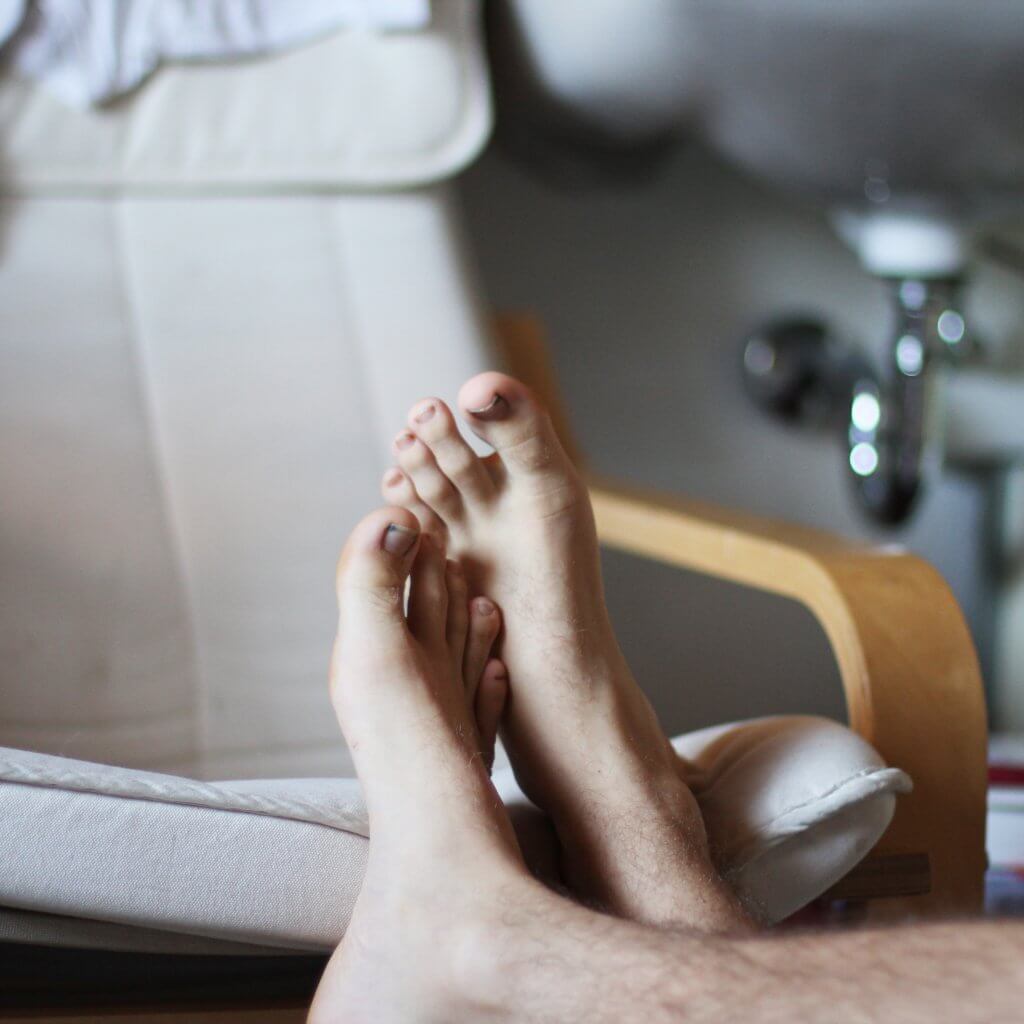Plantar Fasciitis and Peroneal Tendonitis

There is no worse pain than foot or ankle pain for runners. While a sprained ankle keeps the runner on ordered rest for a few days when not severe, bad foot pain can derail a runner for weeks. Ask any runner and no injury is as frustratingly painful as plantar fasciitis. It is among the most common foot injuries, especially for runners. A runner friend was recently diagnosed with plantar fasciitis.
But after eight months and no relief in sight, another injury helped this runner find that her underlying issue was actually peroneal tendinitis. She was shocked but relieved that the root of the pain was found. But, she had not heard of this new diagnosis. So what is the difference between plantar fasciitis and peroneal tendonitis?
Plantar Fasciitis vs. Peroneal Tendonitis
Plantar fasciitis is described as having dull to sharp pain the heel and/or arches of the feet. The pain is usually worse in the morning and gets better in terms of severity throughout the day. The pain can come back after standing from sitting or if standing for a long time.
The foot has thick bands of tissue (called plantar fascia) that connects the heel bone to the toes. Plantar fasciitis occurs when tears to the bands happen when they are overstretched.
Peroneal tendonitis is when the sharp or aching pain makes it way to up alongside the outside of the foot as far as the ankle. Aside from where the pain is located, peroneal tendonitis doesn’t cause pain when just standing the way plantar fasciitis can.
Also called perineal tendinopathy, this occurs when there is damage to the peroneal muscles. These muscles connect to the different areas of the foot and wrap around the protruding bone on the ankle.

Causes
Both plantar fasciitis and peroneal tendonitis are associated is overuse. Plantar fasciitis is among the most common running injury because of stress from absorbing shock when hitting the ground. This is why long distance runners as at high risk for the condition. Other causes include obesity, jobs that require the person to be on their feet all day and have flat feet or a high arch. Women tend to suffer from plantar fasciitis more than men.
Where plantar fasciitis is commonly diagnosed, peroneal tendonitis isn’t. It is a rare condition with limited medical literature. One study found that there is a link between higher arches and peroneal tendonitis.
Another study from California’s Centinela Hospital Biomechanics Laboratory suggests that peroneal tendonitis is tied to faster running, which causes more stress on the tendons.
According to a study in Foot & Ankle International, peroneal tendonitis is also linked previous damage to the tendons from ankle sprains.

Treatment
Both conditions need to be diagnosed by a doctor. By ignoring the pain, it could get worst for cause more injury. Go for an assessment and describe the pain to a medical professional. The podiatrist or sports medicine doctor can assess the feet and make a proper diagnosis.
Treatment for plantar fasciitis includes rest (staying off the feet), this means no running. Icing, stretching and foam rolling are all forms of treatment. Purchase a small medicine massage mall to roll on the bottom of the feet. Some doctors recommended over-the-counter pain relievers like ibuprofen to relieve the pain. Physical therapy for stretching and to strengthen the tendons is also a good idea.
Other forms of treatment range from steroid injections, extracorporeal shock wave therapy )that send sound waves to the heel to stimulate healing), and even surgery. These latter options are used when other treatments don’t work after a prolonged amount of time.

Swelling is a potential side effect of peroneal tendonitis, but it is not an inflammatory condition. As a result, the best thing the runner can do is stay off of their feet and rest. Ice and aspirin can help reduce pain. Once the pain lessens, the best form of treatment is to do rehab exercise that increases the range of motion and strengths the ankle. A good overnight option is definitely a plantar fascia night splint.
Stretching, especially calf stretches, and balance work are key parts of treatment. More serious cases like those associated with ankle sprains could need surgery. However, most runners are back to running after completely healing up with mild treatments. More severe cases means staying away from running for up to six weeks.
Prevention
Runners should replace their sneakers when it is time for a new pair. Wearing out the soles and inner cushioning can result in the lack of support and cause plantar fasciitis. Runners with plantar fasciitis should avoid wear heel because of the high arches.
The same advice goes for those with peroneal tendonitis. Get new running shoes and get fitted for proper running shoes. When running long distance or training for a big race, slowly increase mileage. Don’t jump to high mileage without gradually building to prevent overuse. Take proactive and work on balance exercises as it pertains to the ankle. Set rest days to avoid overuse and give the body time to rest and heal.
Sources
- , 7 most common foot injuries, Health Website
- , What is Plantar Fasciitis?, Health Website
- , Plantar fasciitis, Health Website
- , Do You Have Peroneal Tendonitis? Here is How to Fix it , Running Website
- , More Than Plantar Fasciitis In The Zone of Confusion, Medical Blog
- , Peroneal Tendonitis, Medical Website
Latest Articles
 Is Running on a Treadmill Easier Than Running Outside?Runners have their own preferences, whether it is treadmill running, running outside on the road, or exploring trails. So...
Is Running on a Treadmill Easier Than Running Outside?Runners have their own preferences, whether it is treadmill running, running outside on the road, or exploring trails. So... Is It OK to Use Trail Running Shoes on the Road?While trail running shoes can be used on roads, especially in situations where a runner encounters mixed terrains or pref...
Is It OK to Use Trail Running Shoes on the Road?While trail running shoes can be used on roads, especially in situations where a runner encounters mixed terrains or pref... How to Fix Sore Quads After Running?Rest, ice, gentle stretching, and over-the-counter pain relievers can help soothe sore quads after running. Also, ensure ...
How to Fix Sore Quads After Running?Rest, ice, gentle stretching, and over-the-counter pain relievers can help soothe sore quads after running. Also, ensure ... 10 Fruits With The Most Electrolytes to Replace Sports DrinksThese fruits are high in electrolytes such as potassium, magnesium, and calcium, essential for hydration, muscle function...
10 Fruits With The Most Electrolytes to Replace Sports DrinksThese fruits are high in electrolytes such as potassium, magnesium, and calcium, essential for hydration, muscle function...

